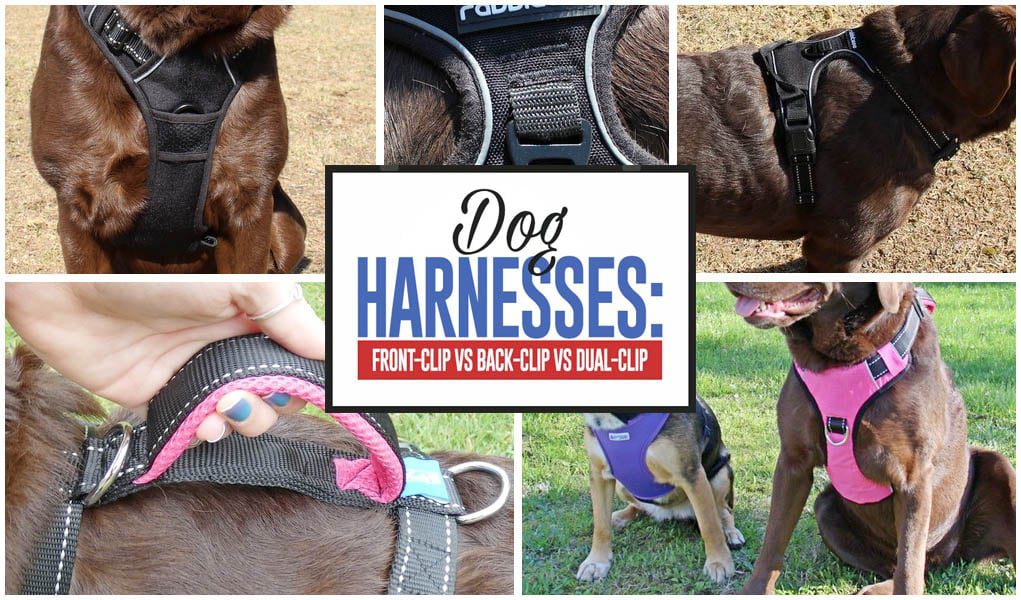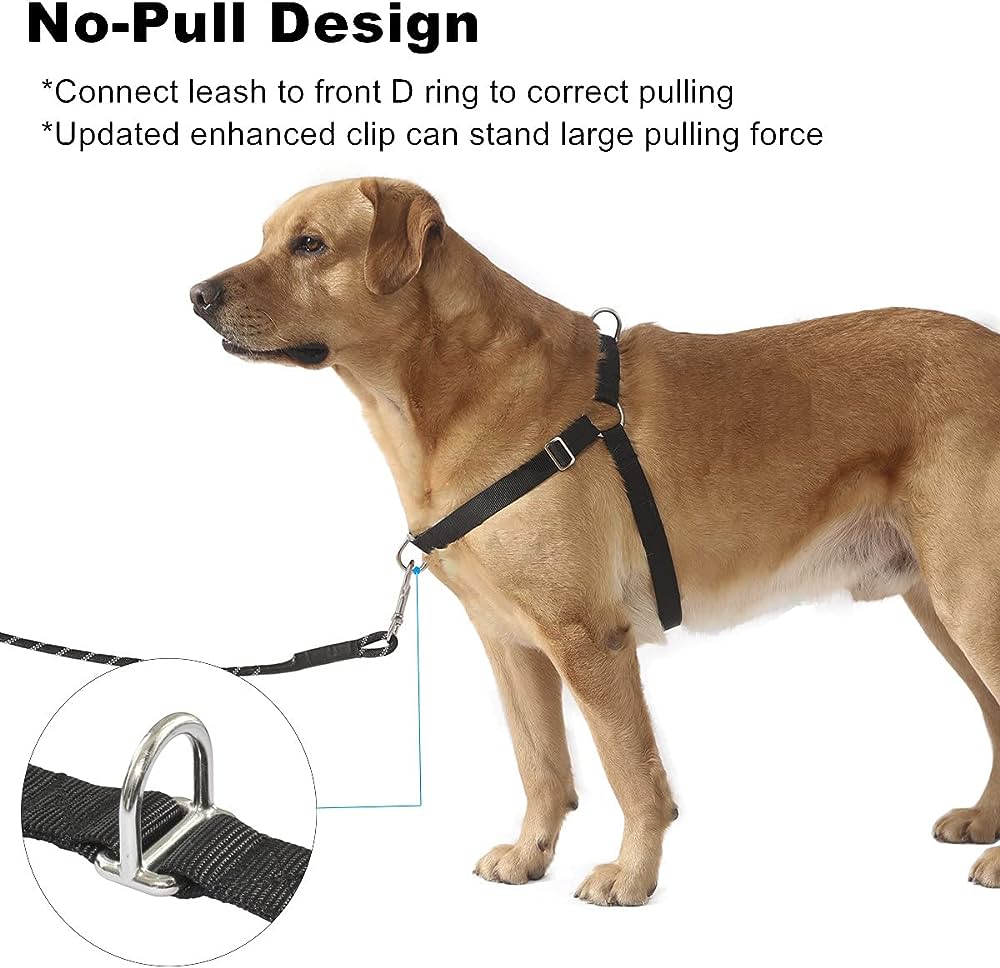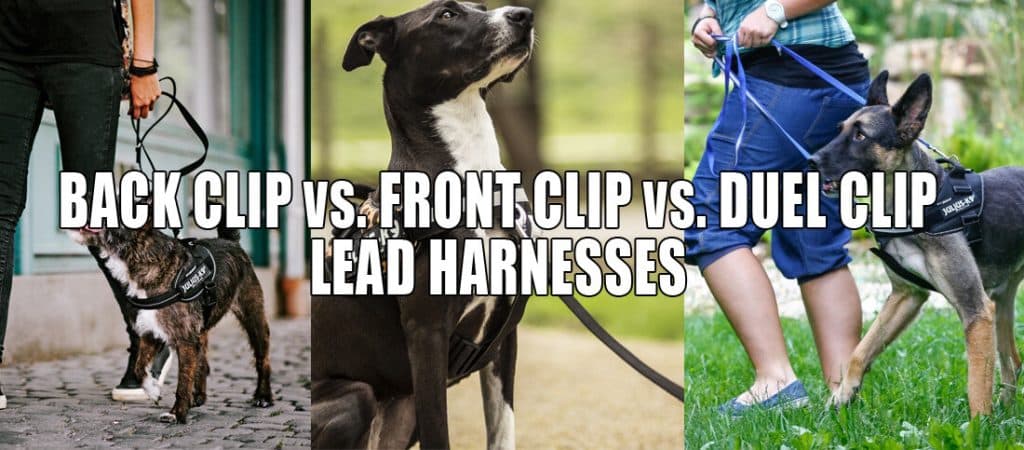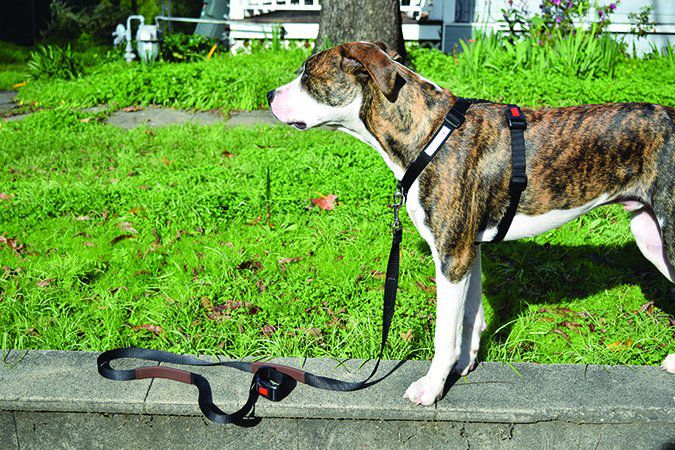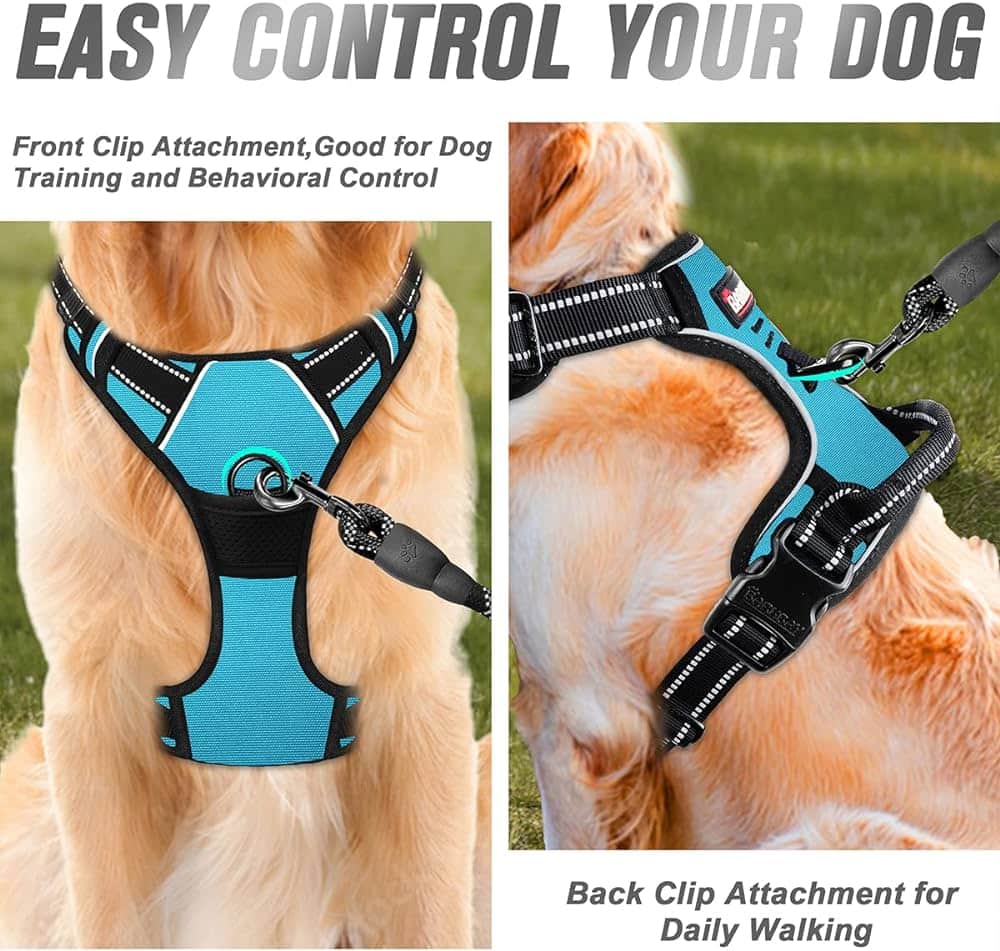Let’s discuss the critical distinction between a front and back clip dog harness. While both restrain your furry friend during walks, they have unique features that cater to different needs.
A front clip harness attaches the leash to the front of the dog’s chest, helping to discourage pulling and redirecting their attention towards you. On the other hand, a back clip harness has a leash attachment on the dog’s back, providing more freedom of movement, ideal for well-behaved pups who don’t pull.
Understanding the differences between these options will help you choose the correct harness for your canine companion and ensure enjoyable walks for both of you.
This image is the property of topdogtips.com.
Overview
Welcome to our comprehensive guide on understanding and choosing the correct dog harness for your furry friend! In this article, we will explore the world of dog harnesses, discussing their importance, types, and critical factors when selecting the perfect harness for your canine companion.
Understanding Dog Harnesses
Dog harnesses are essential in ensuring your four-legged friend’s comfort and safety during walks and other outdoor activities. Unlike traditional collars, which can strain a dog’s neck and potentially cause injury, harnesses distribute pressure more evenly across the chest and shoulders, reducing the risk of harm.
Importance of Choosing the Right Harness
Selecting the correct harness is crucial for your dog’s well-being and overall experience during walks. A well-fitted harness ensures your dog’s comfort, enhances control and allows for practical training. Additionally, choosing a harness that suits your dog’s size, strength, and behavior can help promote proper leash manners and behavior modification.
Types of Dog Harnesses
There are two main types of dog harnesses: front clip and back clip. Each type has unique features, benefits, and suitability for dog breeds and training purposes. Let’s delve into the specifics of each type to help you make an informed decision.
This image is the property of Amazon.com.
Front Clip Dog Harness
Definition and Design
As the name implies, a front clip harness has an attachment point on the front of the dog’s chest. It typically consists of straps that wrap around the chest and shoulders, with the leash attachment point positioned near the center of the chest.
Functionality and Benefits
Front clip harnesses provide better control and steering during walks by redirecting the dog’s forward momentum toward the side. This design discourages pulling and allows for gentle corrections, making it ideal for dogs who tend to lunge or pull on the leash. The front clip harness helps promote better leash manners, encouraging dogs to walk by your side rather than pulling ahead.
Training Applications
The front clip harness can be an effective tool for training dogs to walk politely on a leash. You can teach your dog the desired behavior by using positive reinforcement techniques and harnessing the redirecting effect. It also offers support for dogs undergoing behavior modification training, helping them learn to focus and respond positively to commands.
Suitable Dog Breeds for Front Clip Harnesses
Front clip harnesses are suitable for a wide range of dog breeds, particularly those prone to pulling, such as Labrador Retrievers, Boxers, and Siberian Huskies. Additionally, dogs with respiratory issues or those prone to neck injuries may benefit from using a front clip harness as it reduces strain on the neck area.
Back Clip Dog Harness
Definition and Design
On the other hand, a back clip harness has the attachment point located on the top of the dog’s back, between the shoulder blades. It typically consists of straps that wrap around the chest, shoulders, and sometimes the belly, with the leash attachment point positioned near the center of the back.
Functionality and Benefits
Back clip harnesses provide a more traditional design and are generally easier to put on and adjust than front clip harnesses. They allow for more freedom of movement for the dog, as the attachment point is located on the back, away from the front legs. This type of harness is suitable for dogs who have already mastered leash manners or those who do not exhibit pulling behavior.
Training Applications
While the back clip harness may not offer the same level of control as the front harness, it can still be used effectively for training. It benefits obedience training and activities that require unrestricted movement, such as running or hiking. The back clip harness can also benefit dogs with respiratory issues, as it does not pressure the throat.
Suitable Dog Breeds for Back Clip Harnesses
Back clip harnesses are suitable for dogs who have already been trained to walk without pulling or dogs who do not have a history of leash-related behavior issues. Breeds such as Golden Retrievers, Border Collies, and Beagles, which generally walk calmly on the leash, can benefit from the comfort and freedom provided by a back clip harness.
This image is the property of julius-k9.co.uk.
Comparison
Now that we have explored the features and benefits of both front clip and back clip harnesses let’s compare them based on various factors to help you make an informed decision:
Location of Attachment Point
Front clip harnesses have the attachment point on the chest, while back clip harnesses are on the back.
Effect on Dog’s Movement
Front clip harnesses redirect the dog’s forward momentum to the side, making it easier to control and steer. Back clip harnesses allow for more freedom of movement.
Control and Steering
Front clip harnesses offer better control and steering, especially for dogs prone to pulling, while back clip harnesses provide less control but allow for more natural movement.
Training and Behavior Modification
Both front and back clip harnesses can be used for training, but front clip harnesses are more effective for dogs requiring behavior modification and teaching leash manners.
Pulling and Leash Manners
Front clip harnesses discourage pulling and encourage better leash manners, making them ideal for dogs who lunge or pull on the leash. Back clip harnesses are suitable for dogs who do not exhibit pulling behavior or have already been trained to walk politely.
Comfort and Safety
Both types of harnesses are designed with safety and comfort in mind, but front clip harnesses may be preferred for dogs with respiratory issues or prone to neck injuries.
Exercise Suitability
Back clip harnesses provide more freedom of movement, making them suitable for activities that require unrestricted motion, such as running or hiking.
Ease of Use
Back clip harnesses are generally easier to put on and adjust than front.
Considerations for Choosing the Right Harness
When choosing between front and back clip harnesses, consider your dog’s size, strength, behavior, and specific training needs. Consulting with a professional dog trainer or behaviorist can also provide valuable guidance.
Relevance to Dog’s Size and Strength
Front clip harnesses may be more suitable for larger, more muscular dogs prone to pulling, while back clip harnesses may be suitable for smaller or already well-trained dogs.
Choosing the Right Harness
To ensure you choose the correct harness for your furry friend, consider the following steps:
Understanding Your Dog’s Needs and Behavior
Observe your dog’s behavior during walks and consider their strength, size, and tendency to pull. This will help you understand their unique needs.
Consulting with a Professional
Seek advice from a professional dog trainer or behaviorist who can evaluate your dog’s behavior and recommend the most appropriate harness for training and control.
Trying on and Testing Harnesses
Allow your dog to try different harnesses and observe their comfort level and mobility. Adjust as needed and ensure the harness fits snugly without causing any discomfort.
Considering Individual Factors
Consider your dog’s breed, age, and specific health considerations when selecting a harness. For optimal comfort and safety, some breeds may require special features, such as padded chest plates or adjustable straps.
This image is the property of s28489.pcdn.co.
Training with a Harness
Harnesses can also be used as practical tools for training and obedience. Here are some essential training tips when using a harness:
Positive Reinforcement Techniques
Use positive reinforcement, such as treats and praises, to reward your dog for desired behaviors, such as walking calmly and not pulling on the leash.
Desensitization and Acclimation
Gradually introduce your dog to wearing the harness by allowing them to sniff, touch, and wear it in short increments. This helps them associate the harness with positive experiences and reduces potential anxiety.
Gradual Introduction to Wearing a Harness
Initially, only have your dog wear the harness for short periods, gradually increasing the duration. This helps them become accustomed to the feeling of wearing a harness.
Using Harnesses in Obedience Training
Incorporate harness use in obedience training sessions, reinforcing good behavior and providing guidance through the leash attachment point.
Common Questions and Concerns
Now let’s address some common questions and concerns dog owners may have regarding front clip and back clip harnesses:
Are Front Clip Harnesses More Effective for Pulling?
Yes, front clip harnesses are generally more effective for dogs prone to pulling as they redirect the dog’s forward momentum to the side, making it easier to control and discourage pulling.
Can Back Clip Harnesses Lead to Leash Pulling?
Although back clip harnesses do not actively discourage pulling, they are not inherently the cause of leash pulling. Proper training and reinforcement of good leash manners can prevent pulling regardless of the type of harness used.
Is One Type of Harness Safer Than the Other?
Both front and back clip harnesses are designed with safety in mind, but the safest harness fits properly and is appropriate for your dog’s specific needs.
Can a Dog Slip Out of a Harness?
The risk of a dog slipping out of a harness is minimal if the harness is properly fitted and adjusted. Ensure the harness fits snugly but comfortably, and check for any signs of wear or damage regularly.
This image is the property of Amazon.com.
Conclusion
Choosing the correct harness for your dog is a crucial decision that can significantly impact their comfort, safety, and walking experience. Front clip harnesses provide better control and steering, making them suitable for dogs prone to pulling, while back clip harnesses offer more freedom of movement.
Consider your dog’s needs and behavior, and consult with professionals to help you make an informed decision. Remember, a well-chosen harness and positive reinforcement training can lead to enjoyable and stress-free walks for you and your beloved furry companion.


